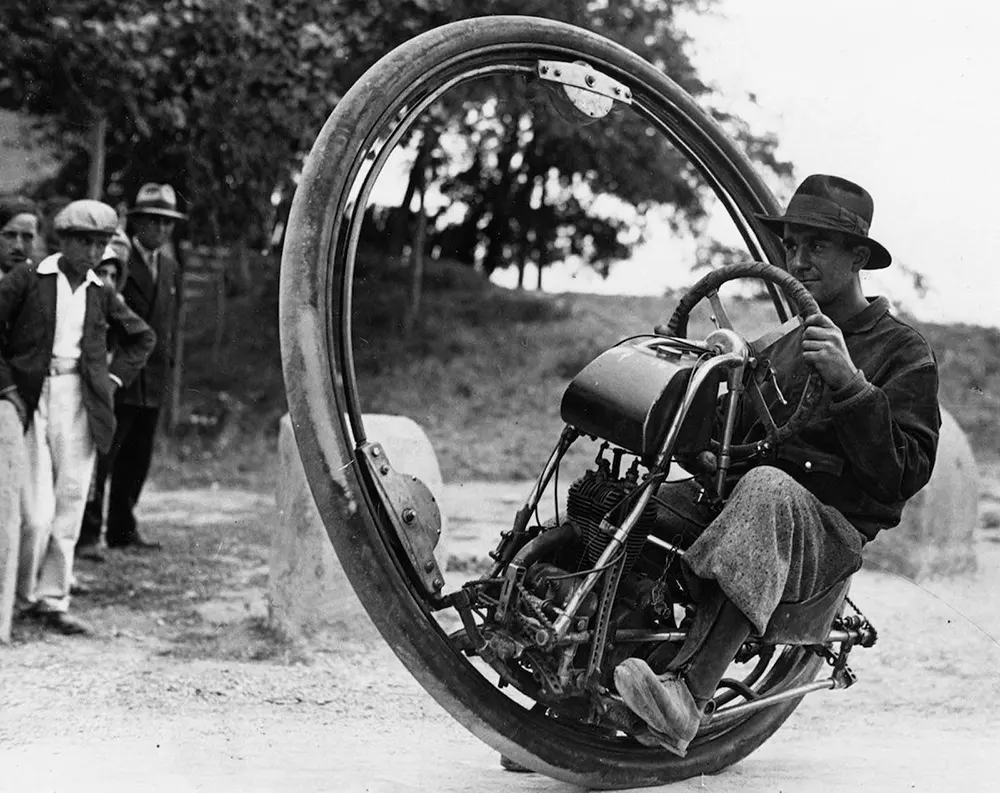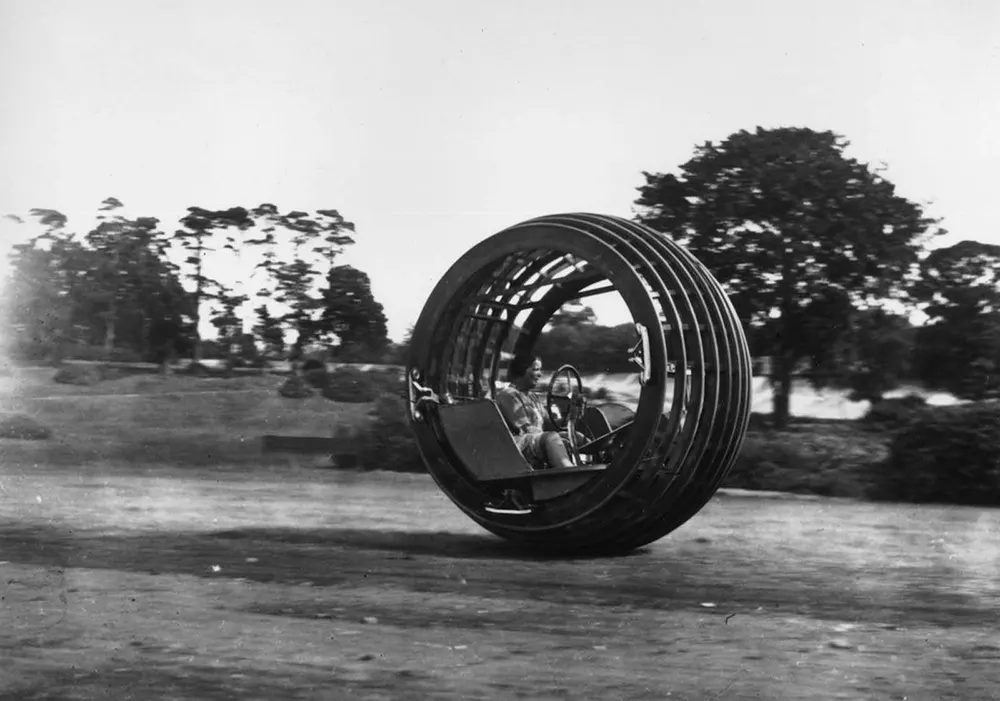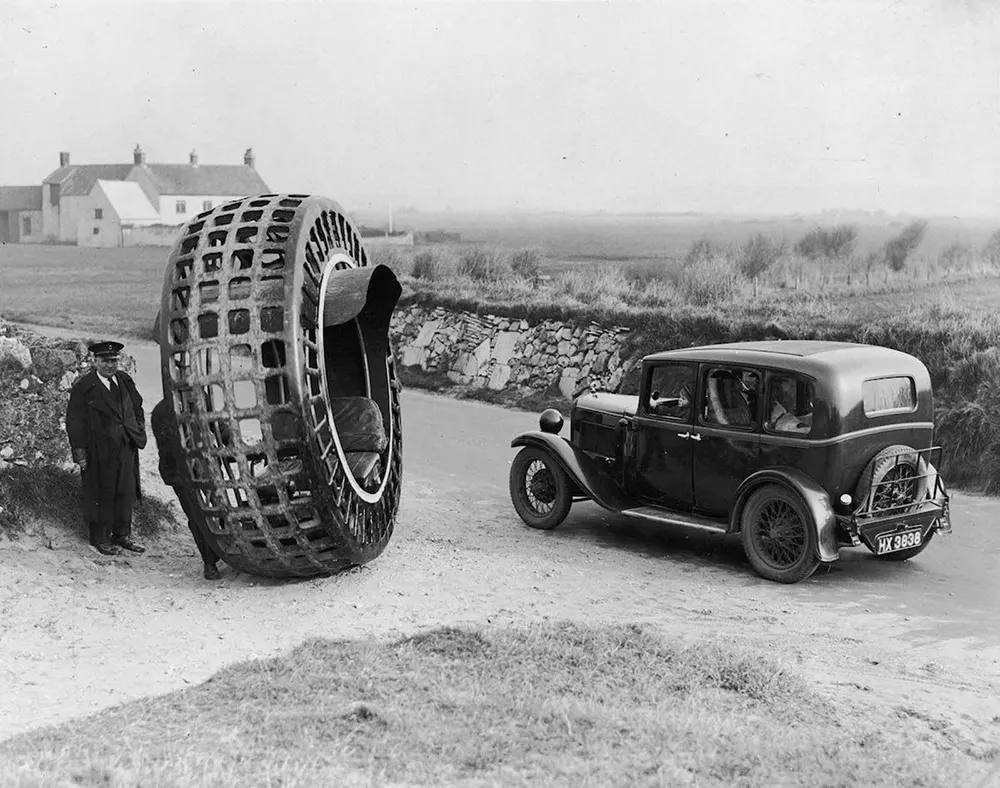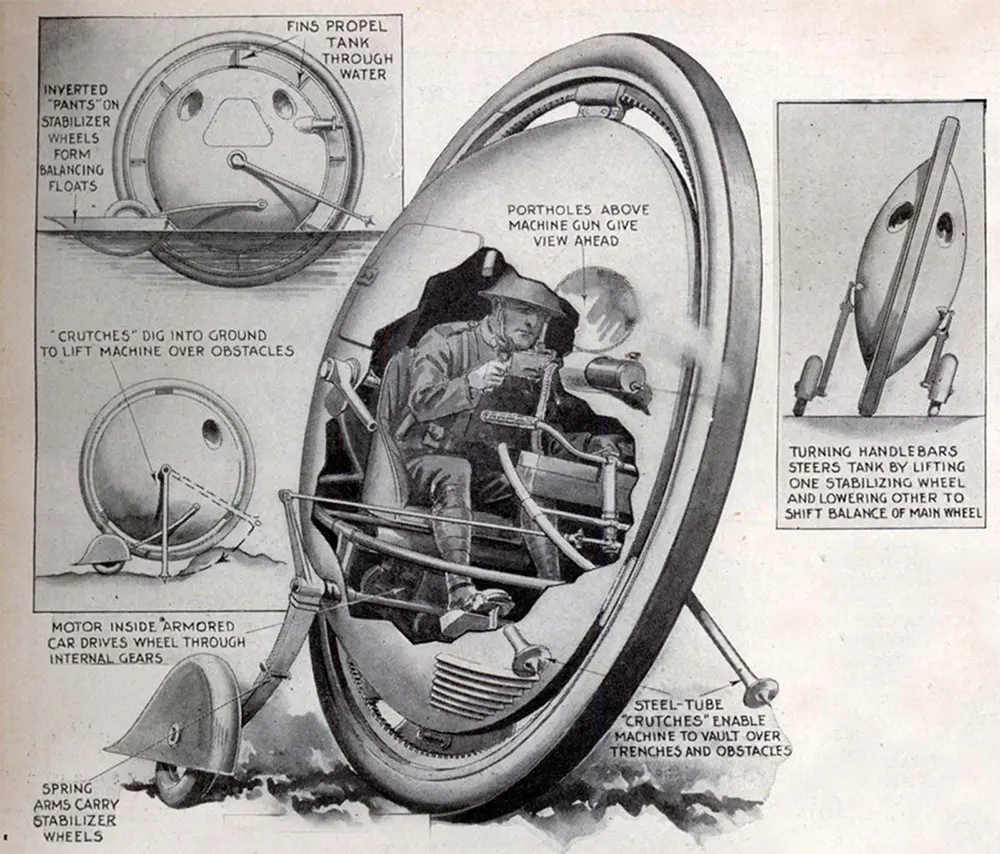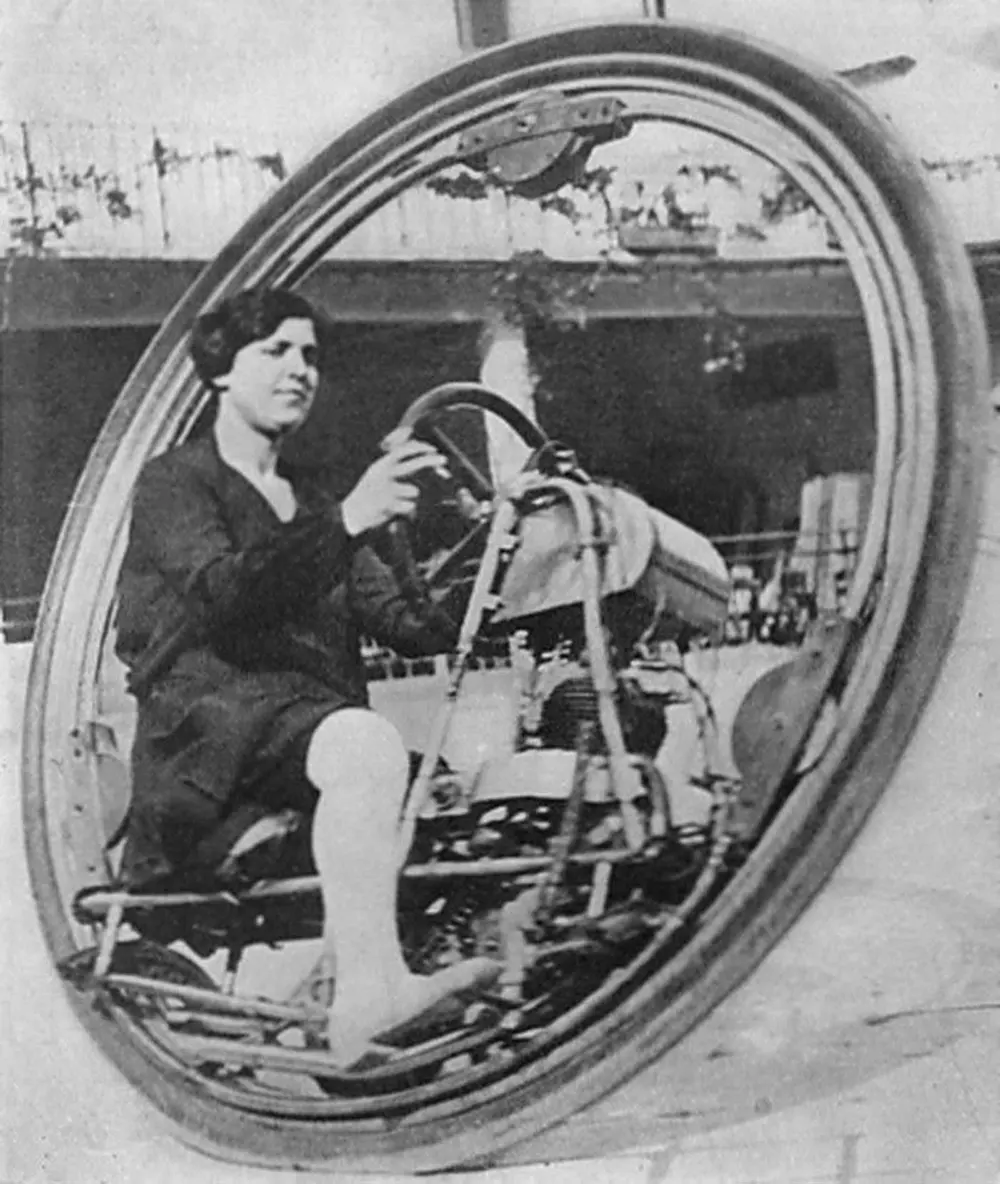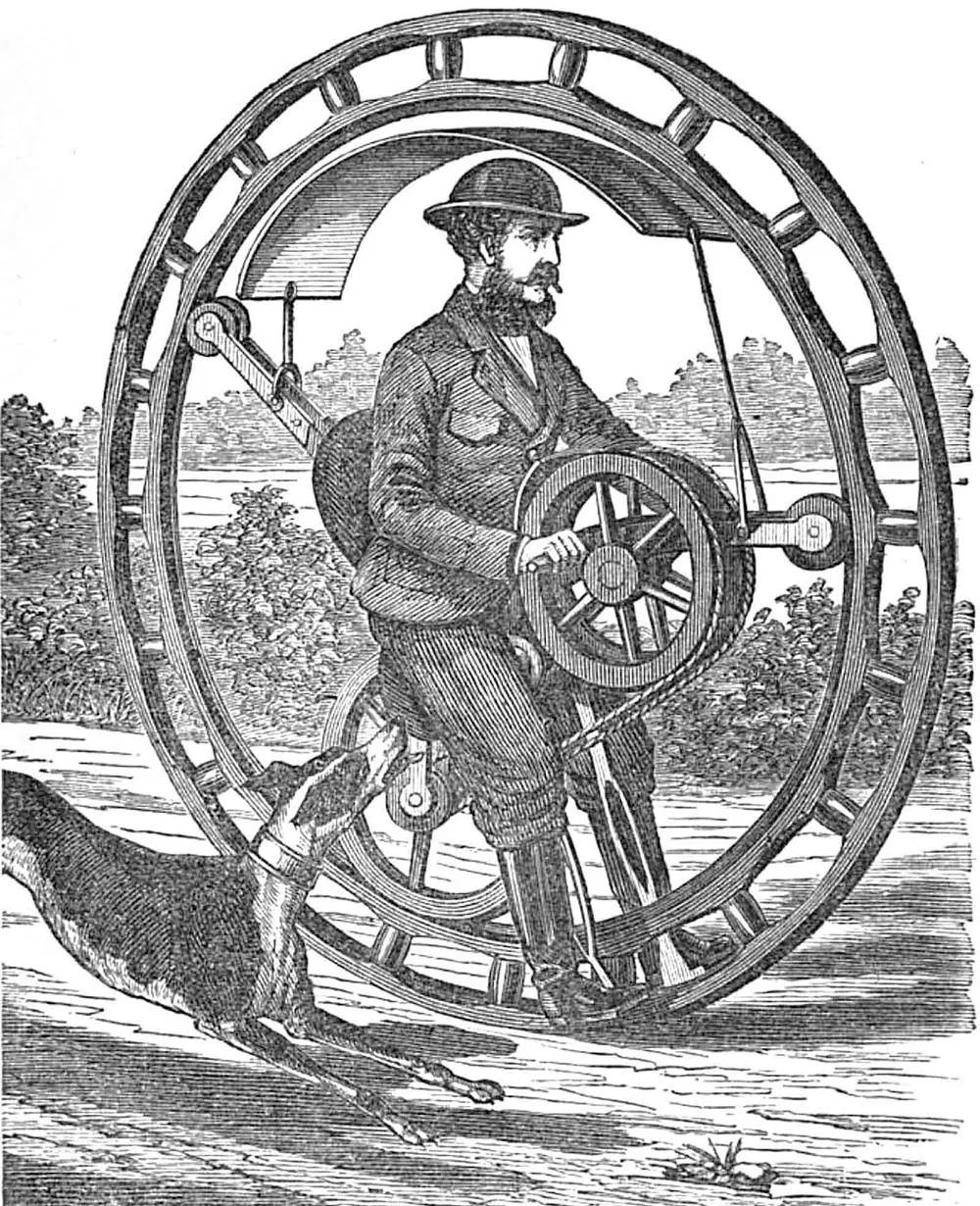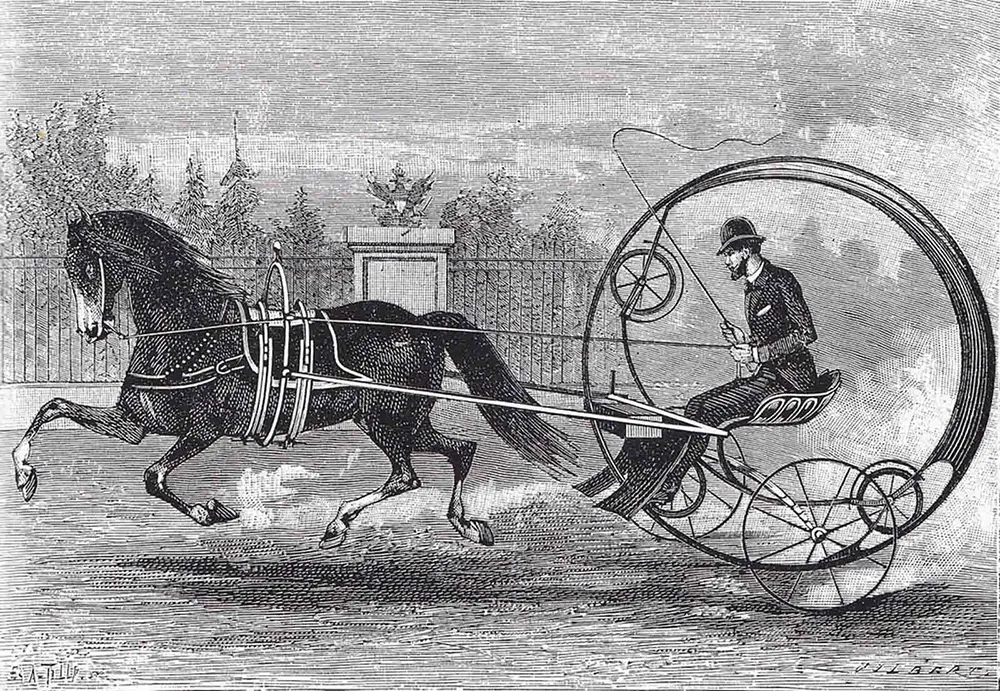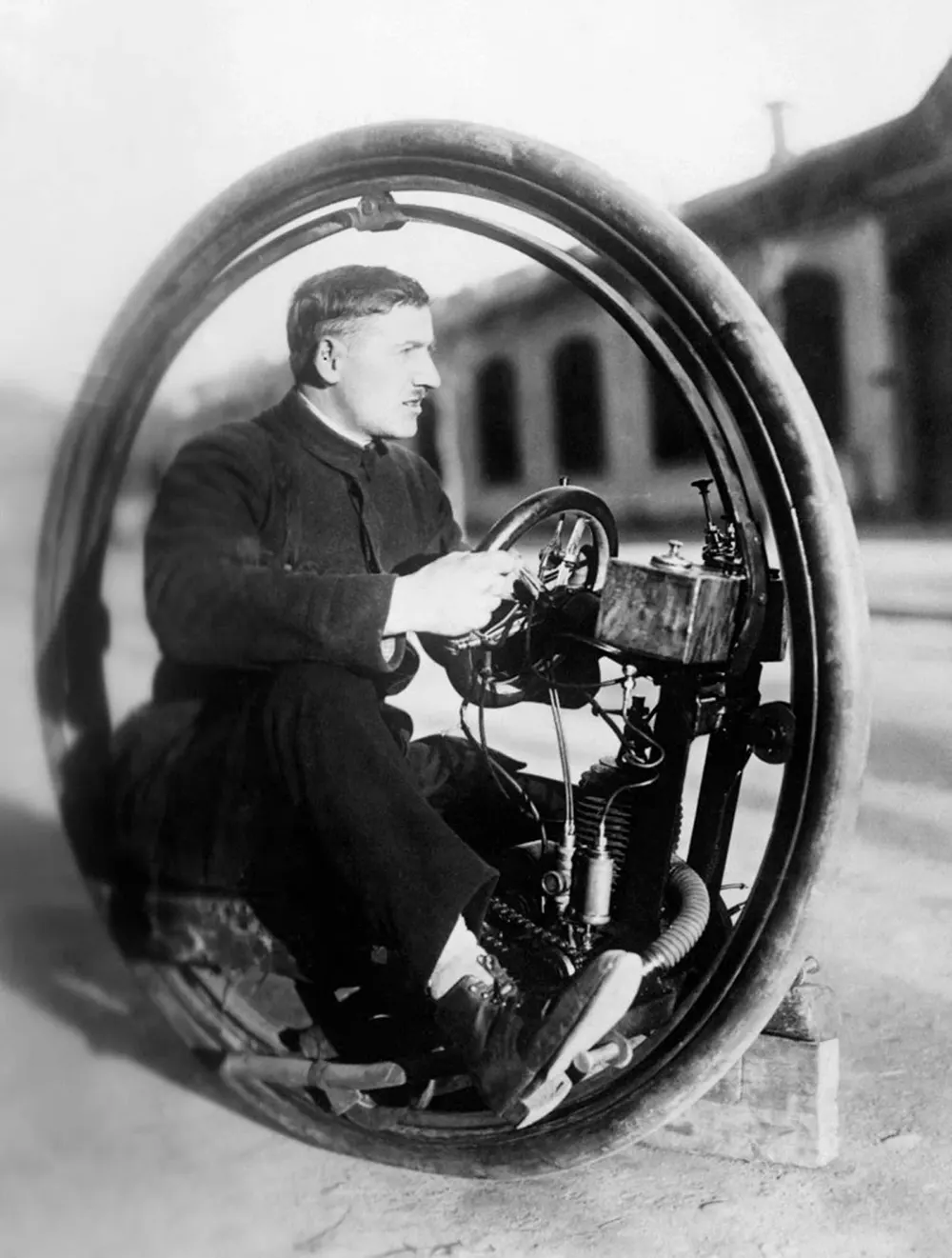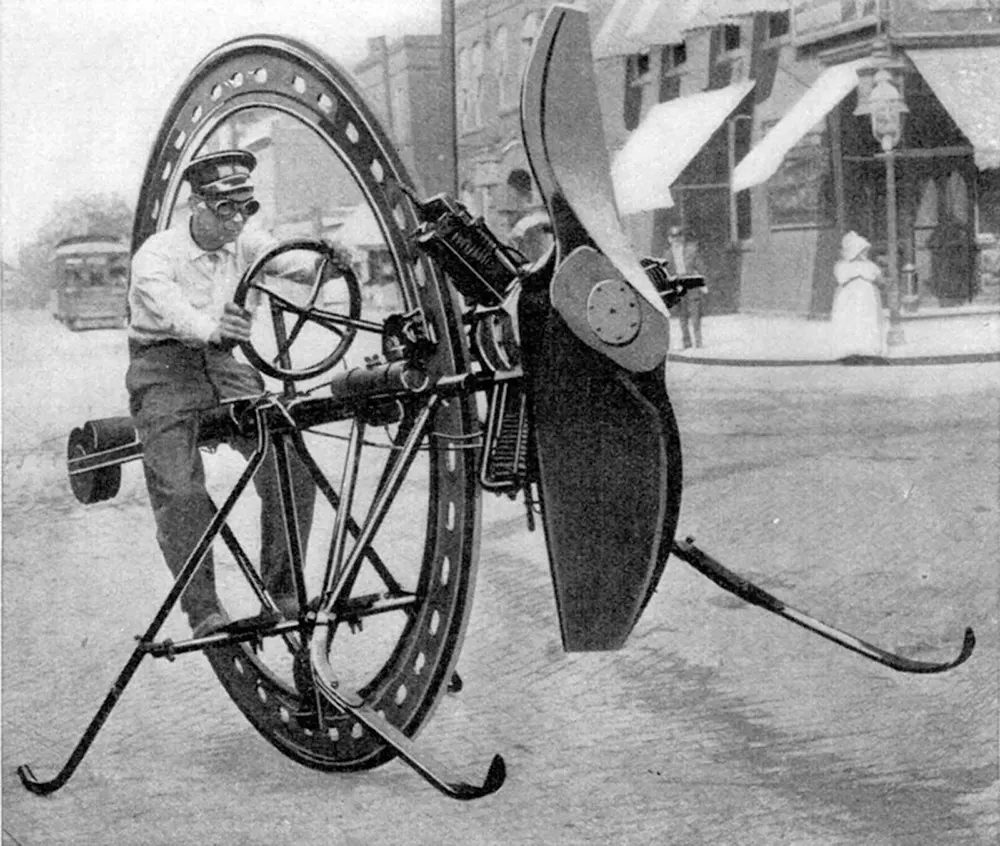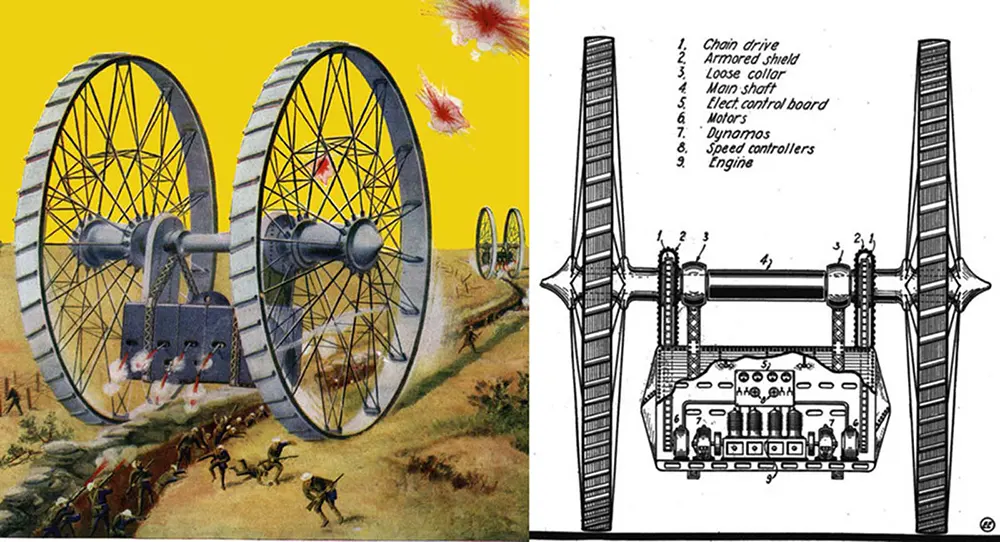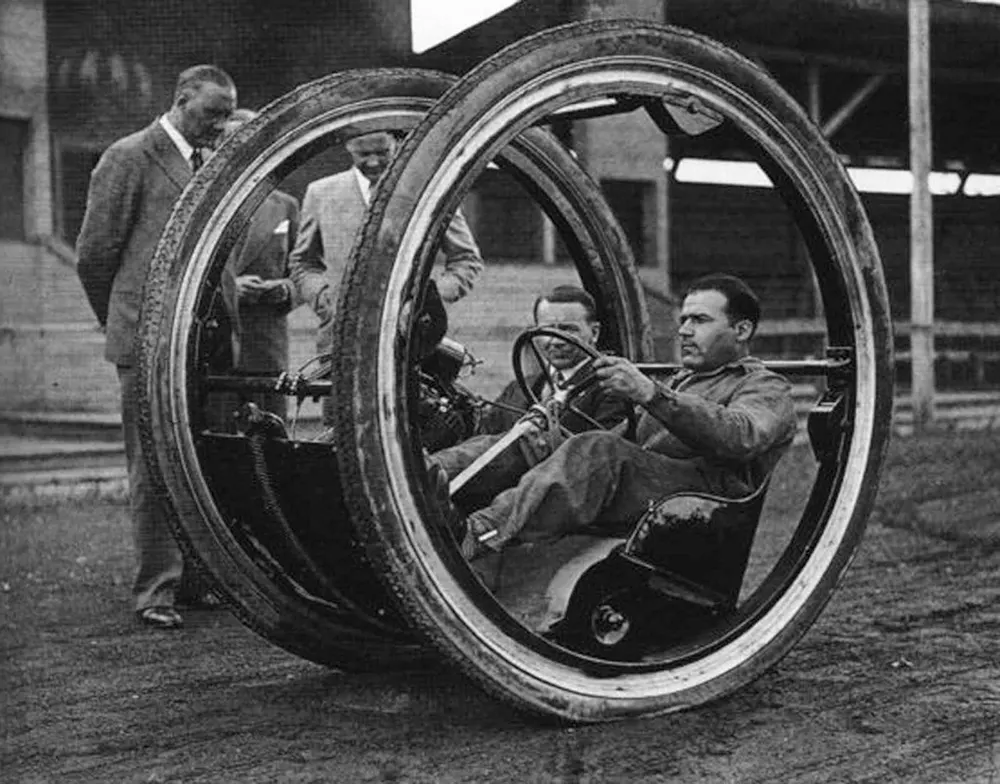Numerous inventors came up with their own versions of the monowheel, some human-powered, some electric, some with gas motors, all working the same basic principle: the driver sits within a smaller inner ring, which presses against the main outer wheel, allowing the vehicle to roll forward while the driver remains level. In 1869, a French inventor created the first known monowheel, but it actually had two wheels. It was a giant wheel with a seat inside. Under the seat was a second, smaller wheel. The rider pedaled to move the small wheel, which in turn moved the larger wheel. Even at that time, the monowheel was recognized as a difficult means of transportation and it was described as “impracticable for ordinary mortals”. By the early 20th century, inventors were experimenting with monowheels powered by actual engines. Some designers also built monowheels with airplane propellers up front to aid in steering. None of these designs ever became mass-produced. In the 1930s, science magazines began featuring designs for car-like monowheels that were enclosed by metal and glass and could seat several people. Arguably the most well-known iteration of the strange type of vehicle is the one created in 1932 by Dr. J.H. Purves. The motorized monster was called the Dynasphere, and it is believed to have reached speeds of up to 25 or 30 MPH. Dr. Purves believed that the monowheel was the most simplified form of motorized transport possible. Unfortunately for him, his creation was never as successful as he hoped. It was not the most stable vehicle, could not carry more than one passenger in addition to the driver, and suffered from a number of other insurmountable design problems. A monowheel is different from a unicycle because the rider sits inside the wheel’s circumference, rather than on top of it or outside it and it works like a giant ball bearing. The driver and the engine anchor the inner wheel, while the engine propels the outer loop. It stays upright through the same principles as a gyroscope. As long as an external force generates motion, in this case, an engine (although some monowheels are pedal-powered), the vehicle will stay in motion. Obviously, turning one of these is tricky, too. A monowheel’s lack of other wheels and somewhat awkward stance makes handling difficult. A rider will typically want to keep his or her feet close to the ground so the monowheel doesn’t tip over completely. In addition, if it has a powerful engine, it’s unlikely that all of the power can be used in this kind of setup. Its lack of stability when forward motion is taken away makes braking especially difficult, too. Overall there were a few problems inherent in the design that inventors sought to overcome – impeded view, lack of stability, the difficulty of steering, and the phenomenon of “gerbiling.” Because a monowheel rider relies on gravity to remain upright if the machine accelerates or brakes too quickly, the rider spins inside the machine like a pet gerbil in its wheel. Unfortunately (or fortunately?), the monowheel never caught on. However, to this day, people still build and attempt to ride these machines, though usually just for entertainment. These rare photographs document the amazing monowheels of the past that look like they zoomed straight out of a sci-fi movie.
(Photo credit: Wikimedia Commons / Library of Congress / Mashable / Getty Images / Warspot / Patrick E. George from How Stuff Work). Notify me of new posts by email.
Δ Subscribe

